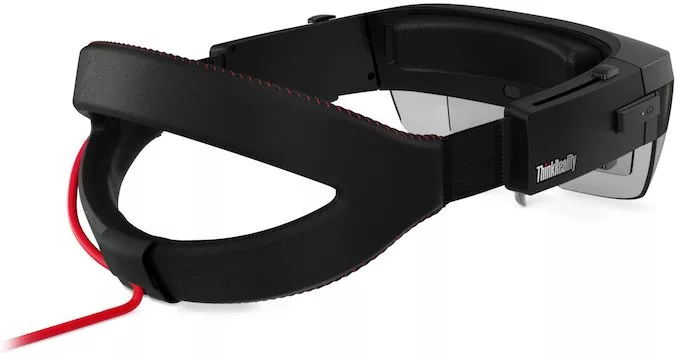When you think of Lenovo, probably the first thing that comes to mind is computers. Last weekend in Vancouver at the VR/AR Global Summit, however, the company displayed its latest foray into the world of augmented reality headsets, in the form of the ThinkReality A6.
Designed to be worn by workers in a variety of fields for long periods of time – without causing fatigue – the Android-based A6 tips the scales at just 380 grams. This lightness of weight is accomplished mainly by moving some of the electronic components, including the Qualcomm Snapdragon 845 processor, out of the headset and into a hard-wired separate module. That device can be stuck in a pocket or worn on a belt.
Like other AR headsets (such as Lenovo's own Mirage), the A6 overlays 3D graphics and/or text onto the user's view of the real world, providing instructions, alerts and extra information for the task at hand. It has a 40-degree field of view and a 16:9 aspect ratio, with resolution sitting at 1080p per eye. Software for the device is created or imported/adapted via the system-agnostic ThinkReality Platform.

Mattney Beck, Lenovo's Senior Product Manager, told us about some of the headset's other features.
"It's got an RGB camera that allows you to do field service or remote assistance," he said. "It also has full mapping and spatial capabilities, so you can position stuff in space – 3D digital assets – and then have them persist where you place them."
Some of its additional selling points include an Intel Movidius VPU; head and gaze tracking; gesture control; voice commands; and a separate handheld controller.
Initially unveiled in May, the ThinkReality A6 is now in limited release. Beck told us that pricing and full availability are likely to be announced within the next month.
Product page: Lenovo ThinkReality A6




